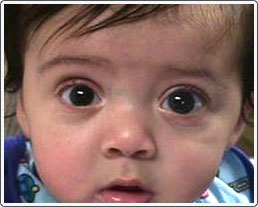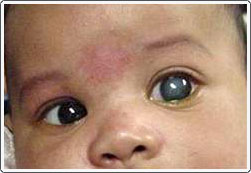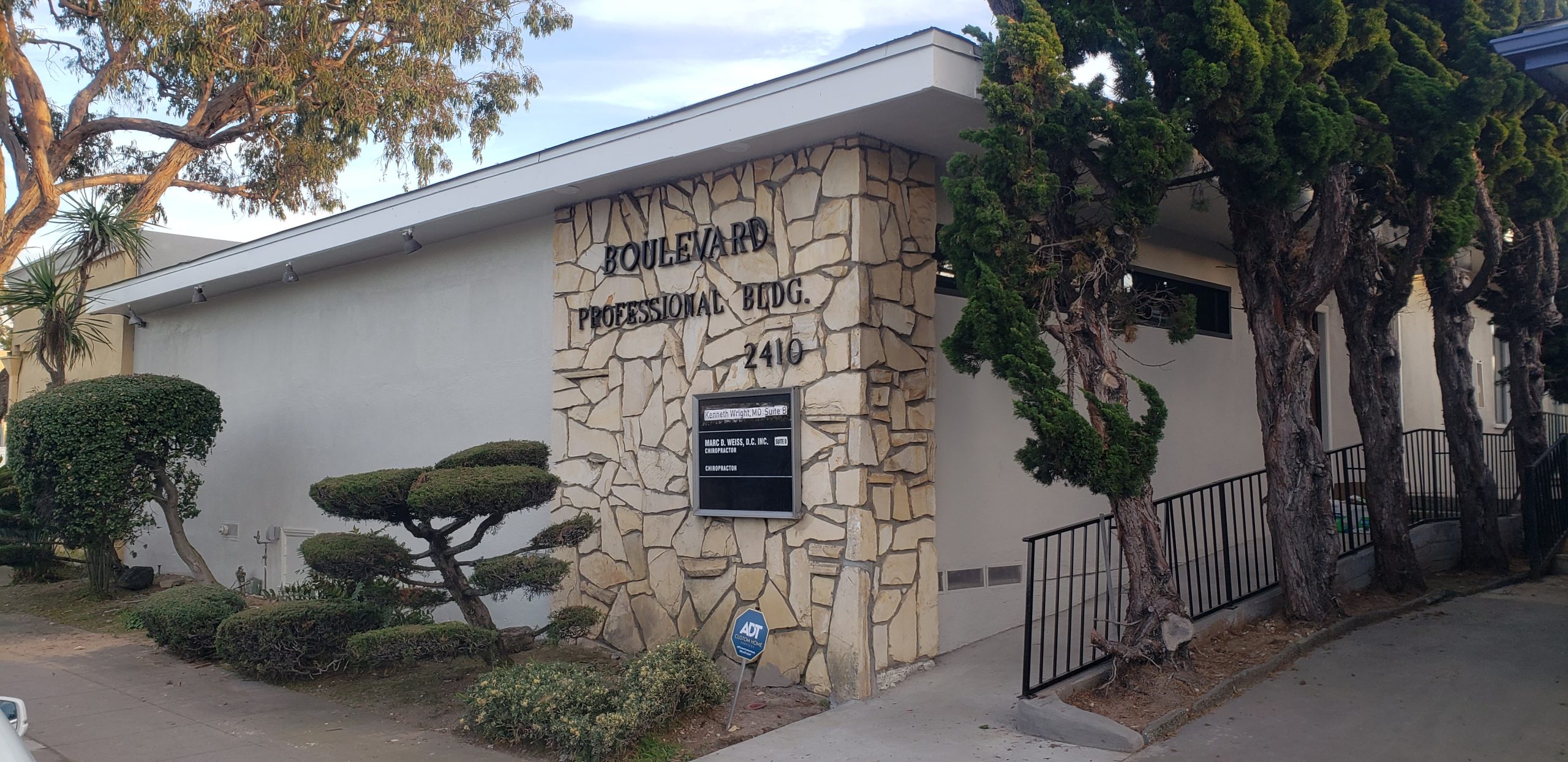
Young child with unilateral congenital glaucoma, left eye. Note the larger size of the left eye (buphthalmos) compared to the right eye. This is a classic sign of congenital, unilateral glaucoma.

Congenital glaucoma, left eye. There is a cloudy cornea, enlarged eye, and strabismus.
Tearing is one of the most common presenting signs of congenital glaucoma, with other symptoms including sensitivity to light, a large cornea, cataract, and corneal clouding. In cases that present with tearing, the diagnosis of congenital glaucoma may be misdiagnosed as a nasolacrimal duct obstruction. In contrast to nasolacrimal duct obstruction where the pupils will have a clear red reflex, congenital glaucoma causes a dull red reflex on the pupils. Juvenile glaucoma, which is extremely rare, has onset after 2-3 years of age with almost no visual signs or symptoms.
The treatment of congenital glaucoma is based on lowering the intraocular pressure in order to prevent optic nerve damage, prevent progressive expansion of the eye, and reduce corneal swelling. Medications have been used to lower intraocular pressures, but they are not effective in most cases, and therapy almost includes surgery to lower the intraocular pressure. The prognosis for congenital glaucoma is fair, with approximately 70% of patients maintaining good, long-term visual acuity.
Unfortunately, those who are in the unfavorable outcome group often go on to blindness. The most important cause of visual loss is attributed to optic nerve damage, which is not reversible. Juvenile glaucoma is more amenable to medical treatment; however, juvenile glaucoma almost always requires surgery.

